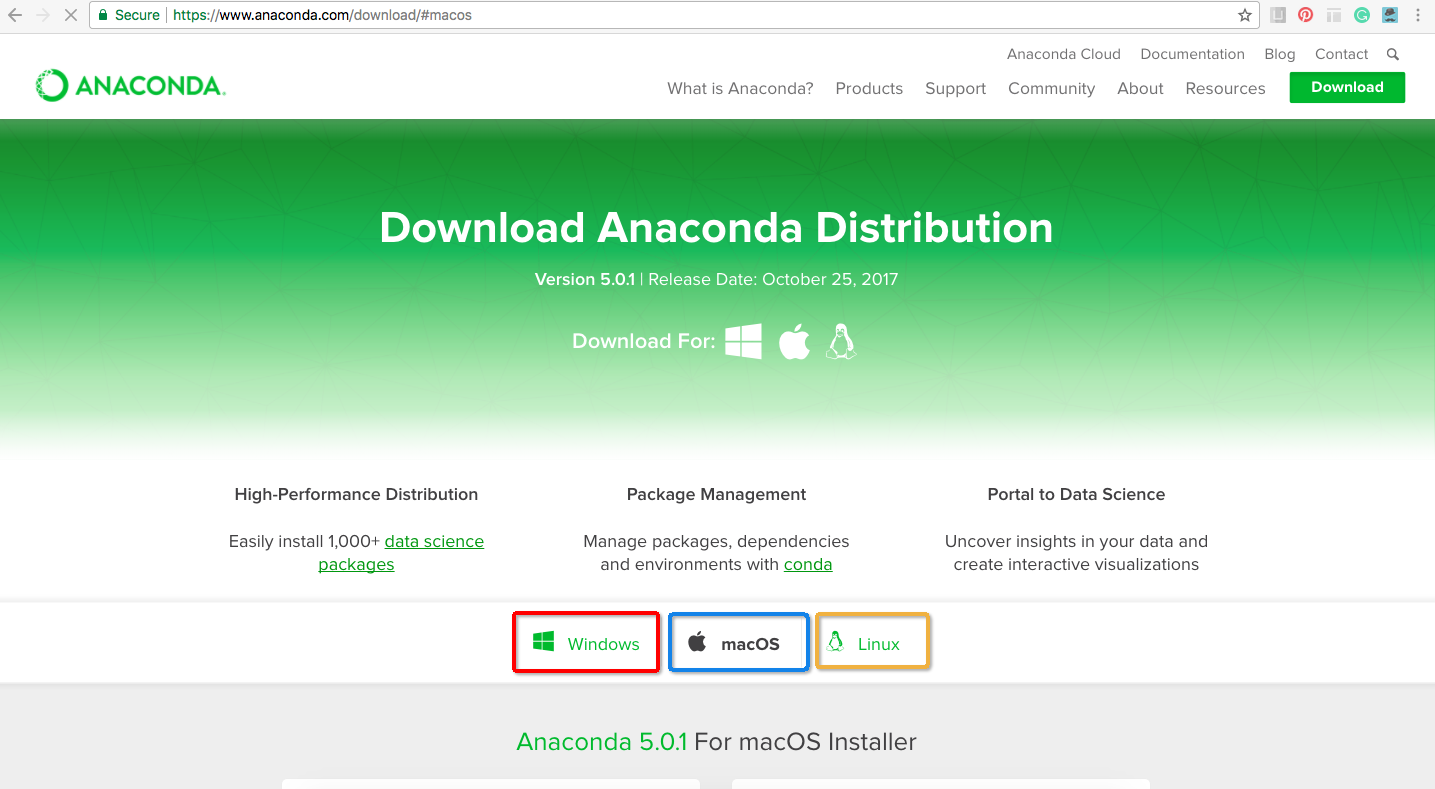


If you’re on a computer where you have admin privileges, choosing All Users makes life a great deal easier, so select that option if you can. The first option worth changing is in the “Select Installation Type” menu, where you choose between installing Anaconda for Just Me or All Users. But the few options you are presented with make all the difference when getting Anaconda to coexist with other Python installations. When you run the Anaconda installer, you won’t be greeted with a great many options. Note also that most of the guidance here pertains to running Anaconda on Microsoft Windows. This article assumes you already have some version of Python installed and you have a basic working knowledge of Python before getting started.
Python anaconda for mac how to#
In this article, we’ll look at how to set up and work with Anaconda alongside conventional versions of Python on the same system. What if you’re using Anaconda alongside other Python distributions, and you don’t want them stepping on each other’s toes? How do you integrate Anaconda effectively with your other Python tooling, like IDEs? And if you decide you just want to use regular Python, how do you remove Anaconda without breaking anything else? Anaconda is also useful as a general purpose Python distribution.īut Anaconda comes with its share of snares and subtleties. Its appeal goes beyond scientific number crunching, though. Don't worry too much about which miniconda Python version you choose: it's really easy to add an environment with another.The Anaconda distribution of Python packs a great many libraries and tools for data science and scientific computing under a single roof.
Python anaconda for mac install#
This means that if you, say, update numpy on your system, you could break other system applications or utilities that you had no idea were using it.Įdit: I'd actually recommend miniconda instead of Anaconda in most cases: it gives you a minimal installation from which you can conda install or pip install any other tools you need. For example, on *nix systems like OSX, there are system tools which depend on Python.

The main complaint I've heard about Anaconda is that it doesn't use the system Python, but this is confusing to me: I'm not sure why you'd ever want to use the system python for scientific computing or development. It obviates all issues surrounding installation of packages and use of mulitple python versions and/or multiple virtualenv-like environments ( anaconda envs are like virtualenv but much, much better for compiled packages). If you're using the scientific stack (numpy/scipy/matplotlib/ipython etc.), Anaconda is the way to go. My work is with large vector spaces and rapid prototyping of learning algorithms and classifiers in these spaces Python is really great for this (most of the time). PS I'm a new coder, coding (so far) exclusively in Python 3(.4). For those of you that have Macs, is there anything I should be mindful of specifically?

Python anaconda for mac full#
Without further ado: what are the pros and cons of using the anaconda (and/or miniconda) suite, specifically in OS X? I've been using the full suite on Windows and I am quite happy with it, but was recently given a Macbook (first Mac product) and since this is a semi-clean slate I'm now starting from, I was curious what benefits / pitfalls might be. I could just be really inept at searching reddit though (probably this I'll admit I tried, but not super hard). I tried a quick search on r/python for anaconda, but didn't see anything that I felt fully quashed my need to post this and get more specific opinions. Hey guys and gals, and happy weekend to you!


 0 kommentar(er)
0 kommentar(er)
